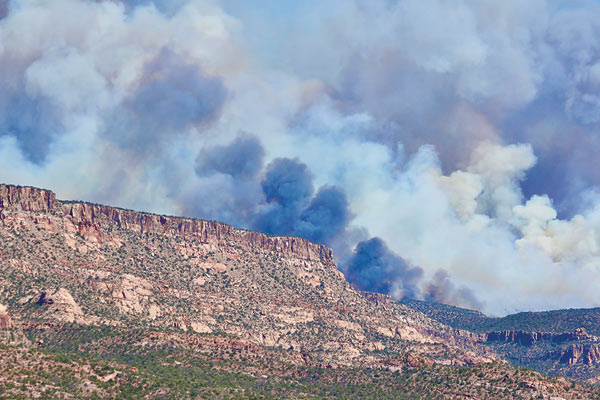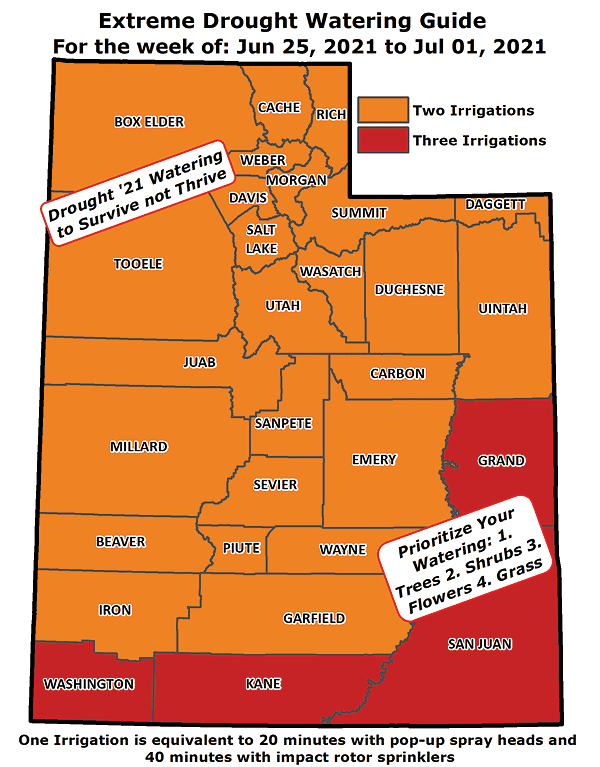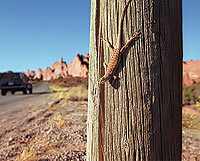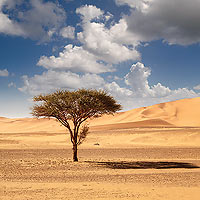|
|
SUSTAINABILITY HAPPENINGS - July 2021
|
Utah State University Extension
Firewise & Post-Wildfire
Landscape Restoration Resources
Roslynn Brain McCann, Sustainable Communities Extension Specialist |
As climate change projections for hotter, drier weather in the Southwest unfold in the form of catastrophic wildfires, and with June’s Pack Creek fire lighting up Moab’s night skies, many are inquiring about preparing their landscapes for future wildfires as well as restoring their landscapes post-wildfire. USU Extension houses a range of resources that may prove helpful:
 |
| Pack Creek Fire from Johnson’s Up On Top. (Photo: Rich Etchberger) |
In early June, USU Extension Forestry Specialist Dr. Mike Kuhns published an Ask the Expert article, entitled “Landscape Now to Help Prevent Wildfire Destruction Later.” Within are several helpful tips ranging from regularly cleaning debris from roof valleys, gutters, and deck corners to keeping firewood, construction items and other flammable materials at least 30 feet from the home. In addition to this Ask the Expert piece, is a fact sheet entitled “Protect Your Home from Wildfire: Ember Awareness Checklist.”
Firewise landscaping is something that homeowners can practice as well. USU Extension Forestry defines this type of landscaping as “the practice of designing, installing, and maintaining a landscape to minimize fire hazard to structures, residents, and neighbors, while maintaining components of the native ecosystems that attracted people to live in such areas in the first place.” The associated USU Extension fact sheet on “Firewise Plants for Utah Landscapes” includes a list of recommended plants, including the botanical name, common name, and plant characteristics.
After wildfire, it is critical to think about land restoration techniques. USU Extension’s post-wildfire website (https://extension.usu.edu/post-wildfire) includes a diverse team of experts and resources for treatments. A community meeting request can be submitted to help guide efforts as well.
Dr. Joe Wheaton at USU specializes in low-tech process-based restoration of riverscapes, especially via incorporation of beavers into the landscape. More information can be found at
http://lowtechpbr.restoration.usu.edu/resources/casestudies/firecasestudies.html
USU Extension Water Quality Specialist, Dr. Erin Rivers, is experienced in soil erosion control. To help mitigate erosion in the short term, she recommends installing wattles, putting up a silt fence, laying an erosion blanket and reseeding.
An overwhelming majority of Utah fires to-date this year have been human caused. As a result, in addition to preparing and restoring landscapes, we all need to practice firewise behavior. The Pack Creek fire was unfortunately linked to an unattended campfire – let’s all be firewise and respect our beautiful natural environment as we enter into a new hotter, drier climate reality in Moab.
|
Extreme Drought Watering Guide
Kim Wells, Public Information Officer, Utah Division of Water Resources |
Extreme drought continues to plague the state, so the Utah Division of Water Resources has replaced its traditional lawn watering guide with an “Extreme Drought Watering Guide” to reflect drought actions. The “Drought Watering Guide” replaces the popular Weekly Lawn Watering Guide and focuses on “survival watering.” While extreme drought conditions exist, the guide will focus on minimal watering to keep grass alive: two times a week in northern Utah and three times a week in southern Utah. These recommendations are also consistent with Gov. Spencer Cox’s June 8 Executive Order.
With 60% of residential water use applied on outdoor landscapes, Utahns are asked to look for ways to reduce their use. Eliminating just one watering can save about 3,000 gallons for the average quarter-acre Utah yard. More drought actions and water-saving tips can be found at slowtheflow.org
The watering guide is found on the division’s water conservation website. Using water efficiently is always the best practice and saves money. But during extreme drought, it’s critical to help stretch the water supply.

|
Trees
by Mila Dunbar-Irwin, Moab City Sustainability Director. |
 It’s that time of year again when shade is an essential part of surviving the heat of the day. That dark pool of shadow on the ground looks almost as good as a pool of water. If you’re way out in the desert on a really hot day you’ve probably found yourself wondering if there’s some way you could contort your body to fit into the tiny patch of shade under a scrubby juniper tree, or even a large sagebrush. When you finally find that good shady spot – whew! The relief is wonderful. It’s that time of year again when shade is an essential part of surviving the heat of the day. That dark pool of shadow on the ground looks almost as good as a pool of water. If you’re way out in the desert on a really hot day you’ve probably found yourself wondering if there’s some way you could contort your body to fit into the tiny patch of shade under a scrubby juniper tree, or even a large sagebrush. When you finally find that good shady spot – whew! The relief is wonderful.
Shade in the desert makes a real difference to what’s on the ground, whether that’s a lizard, a human, soil microorganisms, or other plants. Within our built environment in the City, creating shade through tree cover is a great way to conserve water, reduce accumulated heat, and provide a respite for the human and non-human denizens of the area. By protecting the low-growing vegetation or soil around them from direct sunlight, shade from trees reduces evapotranspiration, which means less water lost from the ground. They also intercept water falling as rain and slow it down, and prevent soil erosion with their roots. Plus, they provide habitat for birds, insects, squirrels, and other creatures who need a place to perch, crawl, or eat. 
Moab has been an Arbor Day Foundation Tree City USA Community for the last 27 years and celebrated Arbor Day again this year. Tree City USA status is conferred by meeting four core standards of urban forestry management: 1) maintaining a tree board or department, 2) having a community tree ordinance, 3) spending at least $2 / capita on urban forestry, and 4) celebrating Arbor Day. While the requirement for #3 was lifted last year, Moab is looking forward to maintaining our beautiful urban trees into the future. Next time you’re walking around downtown or on the bike path, look up into the leaves and thank your trees!

|
|
|
|
|
|
© 2002-2024 Moab Happenings. All rights
reserved.
Reproduction of information contained in this site is
expressly prohibited.
|
|


 It’s that time of year again when shade is an essential part of surviving the heat of the day. That dark pool of shadow on the ground looks almost as good as a pool of water. If you’re way out in the desert on a really hot day you’ve probably found yourself wondering if there’s some way you could contort your body to fit into the tiny patch of shade under a scrubby juniper tree, or even a large sagebrush. When you finally find that good shady spot – whew! The relief is wonderful.
It’s that time of year again when shade is an essential part of surviving the heat of the day. That dark pool of shadow on the ground looks almost as good as a pool of water. If you’re way out in the desert on a really hot day you’ve probably found yourself wondering if there’s some way you could contort your body to fit into the tiny patch of shade under a scrubby juniper tree, or even a large sagebrush. When you finally find that good shady spot – whew! The relief is wonderful.
